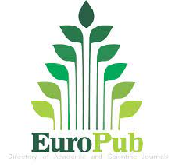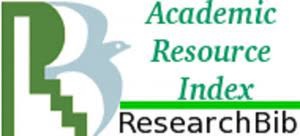INCIDENCIA DE UN PROGRAMA DE ENTRENAMIENTO INTERMITENTE EN EL MEJORAMIENTO DEL RENDIMIENTO FISICO DE LOS ARBITROS DE FUTBOL PROFESIONAL DE ATLANTICO, BOLIVAR Y MAGDALENA
El objetivo del presente estudio fue determinar la incidencia de un programa de entrenamiento intermitente en el mejoramiento del rendimiento físico de los árbitros de futbol profesional del Atlantico, Bolivar y Magdalena. La población estuvo constituida por 19 árbitros, de genero masculino y femenino. El promedio de edad fue de 28,1 años, estatura 173 cm, indice de masa corporal 9,2 Kg/mt2. Las variables de masa corporal, estatura, resistencia a la velocidad, velocidad y potencia aerobica, fueron medidas con la finalidad de determinar el rendimiento físico de los árbitros profesionales.
Para evaluar las variables relacionadas con la aptitud física se utilizó la nueva batería de test físicos de la FIFA, que determina evaluar al árbitro en primera instancia en cuanto a su capacidad anaeróbica al ejecutar carreras rápidas (6 x 40 m), y a su vez medir la capacidad de potencia aérobica en la segunda prueba. Adicional a esto se estimó la potencia aérobica máxima específica a través del test de Leger. Con respecto a los datos de composición corporal, los resultados indicaron que el porcentaje graso fue de 9 %, con un somatotipo promedio de 2,4 – 2,7 – 3,1, registrando una clasificación de tipo central ya que ningún componente difiere más de media unidad. Los resultados relacionados a la aptitud física mostraron que los árbitros de futbol profesional del Atlantico, Bolivar y Magdalena cubrieron, en promedio, 5,2 segundos el test anaeróbico, mientras que en el segundo, todos cubrieron cómodamente la distancia de 4000 metros. La potencia aérobica máxima los árbitros registraron un promedio de 39,9, lo cual indica un Vo2 Max malo.
La mayor acumulación de grasa en árbitros puede ser una limitante del rendimiento físico durante el partido, también es una limitante en el rendimiento el bajo nivel del Vo2 Max.
References
ALBA BERDEAL, ANTONIO LUIS, test funcionales, cineantropometria y prescripción de entrenamiento en el deporte y la actividad física. Armenia 2005. Editorial kinesis.
ALMEIDA, K. Nosso futebol. São Paulo: Arte e Texto, [199?]
ANTUNES, P. Regras de futebol. São Paulo: Cia Brasileira, [1999].
ASAMI, T. TOGARI, H. OHASHI, J. Analysis of movement patterns of referees during soccer matches. In: Reilly, T. Lees, A. Davids, K. Murphy, W.J. eds. Sciense and Football. London, E& E N. Spon, 341-345.
BANGSBO J, KRUSTRUP P. Physiological demands of top class soccer refereeing in relation to physical capacity: effect of intense intermittent exercise training. Journal of sports sciences 2001; 19 (11): 81 – 91.
BANGSBO, J, MARCELLO, I,F, KRUSTRUP, P. The yo – yo intermittent recovery test. A useful tool for evaluation of physical performance in intermittent sports. Sports Medicine 2008. 38(1); 10112-16. 12/08/007.
BAKER J., & BRUCE D. Influence of Body Mass on Resistive Force Selection during High Intensity Cycle Ergometry: Interrelationships between Laboratory and Field Measures of Performance. Journal of Exercise Physiology 7(5): 44-51. 2004.
BARROS, J. M. A. Futebol porque foi...porque não é mais. Rio de Janeiro: Sprint, 1990.
BAZAN, H. P. Somatotype and size of elite male soccer players. J.Sports Sci., 23(10):1057-63, 2005.
BETSCH, T. & PLESSNER, H. Sequential effects in important referee decisions: the case of penalties in soccer. J. of sport & Exercise Psychology, 25:254-9, 2001.
CANADIAN SOCIETY FOR EXERCISE PHYSIOLOGY. PAR –Q and you. Gloucester, Ontario. CSEP. Revisado 2002. 2P.
CARTER, J. E. L.; ACKLAND, T. A.; KERR, D. A. & STAPFF, A. B. Somatotype and size of elite female basketball players. J.Sports Sci., 23(10):1057-63, 2005.
CASAJUS, J. A. & CASTAGNA, C. Aerobic fitness and field test performance in elite Spanish soccer referees of different ages. Journal of science and medicine in sport, 755: 1 – 8, 2006.
CASTAGNA, C.; ABT, G. & D’OTTAVIO, S. Competitive-level differences in yo-yo intermittent recovery and twelve minute run test performance in soccer referees. Journal of Strength and Conditioning Research. 19(4):805-9, 2005.
CASTAGNA, C. ABT, G. D’OTTAVIO, S. Physiological Aspects of Soccer Refereeing Performance and Training. Journal of Sports Medicine. 37 (7): 625-646, 2007.
CATTERALL, C.; REILLY, T.; ATKINSON, G.; COLDWELLS, A. Analysis of the work rates and heart rates of association football referees. British of Journal Sport Medicine, 27(3):193-196, 1993.
CONFEDERAÇÃO BRASILEIRA DE DESPORTOS. Regras do futebol. Rio de Janeiro: Palestra Edições, 1978
CUCHIARO, A.L. (2000). Relação entre consumo/demanda energética, gordura corporal e estresse. Kinesis, (22)113-124.
Da SILVA, A. I. Aptidão física de árbitros de futebol aplicando-se à nova bateria de testes da FIFA. Revista da Educação Física/UEM. Maringá, v.16, n.1, p.49-57, 2005b.
Da SILVA, A.I. RODRIGUEZ-AÑEZ, C. R. Níveis de aptidão física e perfil antropométrico dos árbitros de elite do Paraná credenciados pela Confederação Brasileira de Futebol (CBF). Revista Portuguesa de Ciências do Desporto. Portugal. v. 3, nº 3 p.18-26, 2003.
Da SILVA, A. I. RODRIGUEZ-AÑEZ, C. R. ARIAS, V. D. C. Níveis de aptidão física de árbitros de elite da Federação Paranaense de Futebol. Revista Brasileira de Ciência e Movimento. Brasília, v. 12: n.º 1: p. 63-70, 2004.
Da SILVA, A. I.; ROMERO, E. F.; TAKAHASHI, K. Análisis de los test empleados por la FIFA para evaluar a sus árbitros. Buenos Aires. Revista Digital: www.efdeportes.com, año 8, junio, nº 49. Acesso em: 2/08/2004.
DA SILVA, A.I, RODRIGUEZ-AÑEZ, C.R, FRÓMETA, E.R; O Arbitro de futebol – Uma abordagem histórico – critica. Revista da Educacao Fisica/UEM. Maringa, v.13, n.1, p.39 – 45, 1 semestre. 2002.
DA SILVA ALBERTO INACIO, FERNANDEZ PEREZ RICARDO, FERNANDES LUIZ CLAUDIO. Índice de masa corporal e perímetro da cintura de árbitros de futebol da Confederação Brasileira de Futebol (CBF). Revista da Educacao Física/UEM, Maringá, V 18, n1 p, 41 – 47, 1 sem 2007.
DE LOS SANTOS, BO. H & MARUTZ, C. C. Estudio cineantropometrico de árbitros y asistentes internacionales. Publice standard. 05/02/2007. Pid; 770.
D’OTTAVIO, S.; CASTAGNA, C. Analysis of match activities in elite soccer referees during actual match play. J. of Srength and Conditioning Research, v. 15, n. 2, p. 167-171, 2001.
Dr. C MARIA ELENA GUARDO, DR C ISABEL M. FLEITAS DIAZ, Hacia una teoría del arbitraje deportivo. 2004 Revista digital, Buenos Aires – Argentina.
DUARTE, O. Futebol: história e regras. São Paulo: Makron Books, 1997
EISSMANN, H. J. El árbitro de fútbol. Madrid. 1993 Editorial Gymnos.
EKBLOM, B. Football (soccer). London: Blackwell Scientific, 1994.
FARIA, O. O ôlho na bola. In: SERRAN, R. O juiz. Rio de Janeiro: Editorial Gol, [199?]a. p. 141 – 146.
FETZ, F. KORNEXL, E. Test deportivo motor. 1984 Ed. Kapeluz Buenos Aires-Argentina.
FIFA. Reglas de juego. Zurich. 2007.
FISICA/UEM. 18(1):41-47, 2007.
LERMA GONZALEZ HECTOR DANIEL, metodología de la investigación. BOGOTA, D.C, julio 2001. 165 Pág.
GADOURY, C; LEGER L. (1986). Validite de lepreuve de course navette de 20 m avec paliers de une minute et du physitest canadien pour predire le vo2max des adultes. Staps france. 7. 13. 57 – 68.
GARRIDO C, R., GONZÁLEZ L, M., GARCÍA V, M., & EXPÓSITO I. Correlación entre los componentes del somatotipo y la composición corporal según formulas antropométricas. Estudio realizado con 3092 deportistas de alto nivel. http://www.efdeportes.com/ Revista Digital - Buenos Aires - Año 10 - N° 84 - Mayo. 2005.
GONZÁLEZ-OYA. Características psicológicas en árbitros de fútbol. Julio de 2004. Tesis doctoral no publicada. Vigo: España.
GUARDO, M.E.G FLEITAS, I. M. D. (2004). Hacia una teoría del arbitraje deportiva: ¿Es la teoría del arbitraje deportivo un problema científico a solucionar? Buenos Aires. Revista Digital: www.efdeportes.com año 10, marco, nº 70. Consulta el 5/4/2005.
HEITMANN B.L; FREDERIKSEN P. y LISSNER L. Hip circumference and cardiovascular morbidity and mortality in men and women.bones. En : Obesity Res. Vol. 12 (2004); p. 482-487. Citado por: LAWRENCE, de Koning et al. Waist circumference and waist-to-hip ratio as predictors of cardiovascular events: meta-regression analysis of prospective studies. En European Heart Journal. Vol. 28 (2007); p. 850.
HELSEN, W.;BULTYNCK, J. B. Physical and perceptual-cognitive demands of top-class refereeing in association football. Journal of Sports Sciences, v. 22, p. 179-189, 2004.
KRUSTRUP, P. BANGSBO, J. (2001). Physiological demands of top-class soccer refereeing in relation to physical capacity: effect of intense intermittent exercise training. Journal of Sports Sciences; (19), 881-891.
KRUSTRUP, P., MOHR, M. y BANGSBO, J. (2002). Activity profile and physiological demands of top-class soccer assistant refereeing in relation to training status. Journal of Sports Sciences, 20, 861-871.
LEGER. L, LAMBERT J, GOULETA, ROWAN C, (1984). A maximal multistage 20 m shuttle run test to predict vo2max. EUR J Appl Physiology. 49 (1). 1 – 12.
MALLO, J. (2006). Análisis del rendimiento físico de los árbitros y árbitros asistentes durante la competición en el fútbol. Tesis Doctoral. Facultad de Ciencias de la Actividad Física y el Deporte. Universidad Politécnica de Madrid.
MALLO, J., GARCÍA-ARANDA, J.M. y NAVARRO, E. (2004). Optimización del rendimiento de los árbitros de fútbol con ayuda del análisis biomecánico. Biomecánica, 12, 97-103.
MALINA R. Antropometría. Proceedings V Simposio Internacional Actualización en Ciencias Aplicadas al Deporte. Cap. 1 pp. 101-114. Edit. Biosystem. 1997.
MANZOLELLO, L. Futebol: revolução ou caos. Rio de Janeiro: Editorial Gol, [1999].
MS. C. ALBERTO INÁCIO DA SILVA, DR. C. EDGARDO ROMERO FRÓMETA, DR. RICARDO FERNANDEZ, PROF. RUI MENSLIN, Análisis de un test más específico para evaluar la capacidad aeróbica del árbitro de fútbol. www. Efdeportes.com, revista digital, buenos aires, ano 9, No 65, año 2003.
MARRERO, G. estudio sobre los árbitros de fútbol. 1998. Las palmas de gran canaria. Centro de estudios del arbitraje deportivo. Universidad de las palmas de gran canaria.
MAZZA, J. C; CARTER, L; REILLY, T; RIENZI, E. Futbolistas Sudamericanos de elite: Morfología, Analisis de juego y Performance. SOKIP ( Soccer Kineanthropometric Proyect 1), Ed. Biosystem, Copa América. 1995.
OLIVEIRA, M.C, SANTA, C.H.G, BARROS NETO, T.L. Analisis de los patrones de movimiento e índices funcionales de los arbitros durante un partido de futbol. Fitness & Performance Journal. 2008; 7(1): 41 – 47.
PEREIRA, J.A; ALADASHVILE, G.A, DA SILVA, A.I. Causas que levam alguns arbitros a desistirem da carreira de arbitro profissional. Revista de educación física/UEM. Maringa, v. n,2, p. 185 – 192. 2, semestre 2006.
POLLOCK, M. L. WILMORE, J. H. Exercício na saúde e na doença. 2ª ed. São Paulo: Medsi, 1993.
REBELO, A. SILVA, S. PEREIRA, N. SOARES, J. (2002). Stress físico do árbitro de futebol no jogo. Revista Portuguesa de Ciências do Desporto. Portugual. Universidade do Porto.Vol. 2, nº 5 p.24-30.
RIENZI, E.; MAZZA. J. C; CÁRTER, J. E. L. & REILLY, T. Futbolista Sudamericano de Élite: Morfología, Análisis del Juego y Performance. Rosario, Biosystem Servicio Educativo, 1998.
REILLY, T. THOMAS, V. A motion analysis of work – rate in different positional roles in profesional Football match – play. Journal of Human Movement Studies. Edinburgh, 2: 87 – 97, 1976.
RODRIGUEZ YERO, Luis; VAZQUEZ RUBIO, Mario. El proceso de formación del árbitro. Buenos Aires. Revista digital: www.efdeportes.com, año 9 No 61. Junio 2003.
ROMAN, E. R.; ARRUDA, M.; GASPERIN, C. E. B.; FERNANDEZ, R. P. & DA SILVA, A. I. Estudo da desidratacao, intensidade da atividade fisica e distancia percorrida pelo arbitro de futebol durante a partida. Revista Brasileira de Fisiologia do Exercicio, 3(2):160-71, 2004.
RONTOYANNIS, G. P. et al. Medical, morphological and functional aspects of greek football referees. J Sports Med Phys Fitness, Turin, no. 38, p. 208-214, 1998.
SALDANHA, J. O futebol. Rio de Janeiro: Edições Bloch, 1971.
SAMULSKI, D.M. NOCE, F. COSTA, E.G. Análise do estresse psicológico do árbitro: um estudo comparativo entre futebol e voleibol. Revista da APEF, Londrina: Vol. 14: nº 1: p. 13 - 28. 1999.
SERNA, D. Deportes ticulo agosto de 2008. www.deportesticulo.com
SILVA A.I, PEREZ R.F, FERNANDES L.C. Determinación de la capacidad física y el perfil antropométrico de la arbitra de futbol. Fitness & Performance Journal 2007; 6(1): 45 – 52.
VAN GOOL, D. VAN GERDEN, D. BOUTMANS, J. The physiological load imposed on soccer players during real match – play. In really, T. Less, A. Davids, K. Murphy, W.J. Science of football. London; E & F.N Spon, 1988, p. 51 – 59.
WESTON. M. AND BREWER, J. A study of the physiological demands of soccer refeering. Journal of Sports Sciences 20, 59-60. 2002.
WITHERS R., LAFORGIA J., & HEYMSFIELD S. Critical appraisal of the estimation of body composition via two, three and four compartment models. American Journal of Human Biology 11:175-185. 1999.
WWW.ARBITRUM.COM, pruebas físicas de futbol 11 circular 1013 enero de 2006.
YUHASZ, M. The effects of Sports training on body fat in man with predictions of optimal body weight Doctoral dissertation. Urbana: Univ. of Illinois, 1962.

















